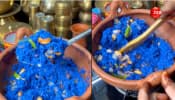Melbourne: Dust may be more rare - even 100 times less - than expected in galaxies of the early Universe, a new study has found.
In a galaxy named I Zw 18, an international team of researchers measured the lowest dust mass of a galaxy that has ever been measured.
"It`s not just that the dust mass is low. We found that the dust mass is 100 times smaller than would be expected based on commonly assumed theories," Dr David Fisher from Swinburne University of Technology said.
The galaxy, I Zw 18, is nearby, which makes it easier to study, but has properties that are very similar to galaxies of the high redshift universe, researchers said.
"It`s an extreme galaxy in the local universe, but it tells us a lot about a stage that almost all galaxies have gone through, so it gives us a picture of what the first galaxies look like," said Fisher.
Fisher said the results imply that galaxies of the early universe may have less dust than has been expected.
This means, firstly, that they will look different than we expect and make different populations of stars than we expect, researchers said.
And secondly, that they will be much more difficult to observe, even with state-of-the-art facilities being built now such as the Atacama Large Millimetre/sub-millimetre Array (ALMA) of radio telescopes in northern Chile.
"IZw 18 is typical of very high redshift galaxies because it is very actively forming stars, and has a chemistry that is more like galaxies of the very early Universe with a very low abundance of metals and a lot of gas in the form of hydrogen," Fisher said.
"Our result implies that current theories to describe the formation of stars when the Universe was very young are incomplete, and are built on invalid assumptions," he said.
According to Fisher, the amount of dust is very important for the formation of stars.
"What we think is going on, is that the harsh environment inside the galaxy we examined is adversely affecting the amount of dust in it.
"The radiation field measured inside I Zw 18 was roughly 200 times stronger than what we experience here in the Milky Way," said Fisher.
Fisher said that based on the findings, theories should be amended to account for environment in making stars.
The study was published in the journal Nature.















